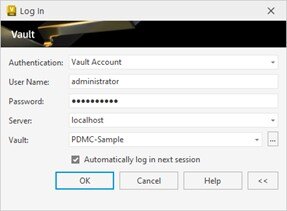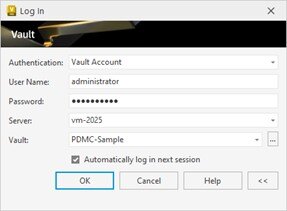
If are you looking for a smooth and effortless integration between Vault and your ERP
Join our upcoming webinar on May 31st
Autodesk Vault API Traffic Tracing with vapiTrace
Visualize, understand, and replicate Vault API calls with ease—powered by Fiddler and enhanced by vapiTrace.

The Problem: You Can't Improve What You Can't See
If you’ve ever tried to create custom Vault extensions or tailor Vault Data Standard, you know the struggle: The Autodesk Vault API gives you all the ingredients such as methods, parameters, and data structures but no recipe.
You want to automate a process like checking out a file, changing properties, or updating lifecycle states. The documentation confirms it’s possible but:
-
What’s the right call sequence?
-
Which parameters are actually required?
-
Why isn't your code working as expected?
One smart approach is to observe how Vault behaves during manual actions. This reveals the real API calls used by the Vault Client in action. For that, Telerik Fiddler Classic is often the tool of choice to monitor HTTP/S traffic, including SOAP requests.
But here’s the catch: Fiddler isn’t optimized for Autodesk Vault.
SOAP calls appear as raw XML blobs unstructured, unreadable, and disconnected from Vault’s SDK documentation.
You're left scrolling through lines of cryptic data, guessing your way forward. That’s where vapiTrace steps in.
Enter vapiTrace: Vault API Clarity, Delivered
vapiTrace, developed by COOLORANGE, is a Fiddler extension that enhances the Vault API debugging experience by providing:
Better API call visualization – See requests and responses in a structured, readable format.
Contextual API references – Access Autodesk Vault SDK documentation directly within the interface.
PowerShell code-snippet generation – Instantly generate and copy PowerShell scripts from API calls for automation.
With vapiTrace, analyzing Vault API traffic becomes straightforward, making it easier for developers to understand, debug, and optimize their integrations.
Installation Instructions
Get started with vapiTrace in just three simple steps:
Step 1: Download and install: Telerik Fiddler Classic.
Step 2: Download vapiTrace from the link below.
Step 3: Extract the vapiTrace ZIP file to:
%localappdata%\Programs\Fiddler\Inspectors
Once installed, restart Fiddler Classic to activate vapiTrace.
Using vapiTrace
After opening Telerik Fiddler Classic, you see the complete HTTP traffic between your computer and other machines. This includes the SOAP API calls between the Vault Client and the Vault Server.
Vault Login

Server: "localhost” must not be used when tracing the Vault API with Fiddler Classic

Use the machine name in case Vault Client and Server is installed on the same machine
Please note, if your Vault Server and your Vault Client is installed on the same machine, you must not login to the Vault Server using “localhost”. The .NET Framework (which Vault uses in the background) is hardcoded not to send requests for “localhost” through any proxies, and as a proxy, Fiddler Classic will not receive such traffic.
Instead, use the machine name or the IP address of the Vault Server!

Fiddler Classic Filters
Fiddler traces all your computer’s HTTP/HTTPS traffic. A lot of applications, including Outlook or any browser is using the same protocol, which results in unwanted traffic inspection while trying to trace the Vault API calls. To limit the traffic to Vault API calls, Fiddler’s “Filters” functionality can be used!
Select the “Filters” tab in the Fiddler Classic main window, activate the option “Show only if URL contains” the add /AutodeskDM/
vapiTrace Inspectors
Select the “Inspectors” tab in the Fiddler Classic main window. After vapiTrace is installed, you find two additional tabs called “vapiTrace”. One in the request section at the top and one in the response section at the bottom:

When vapiTrace detects a HTTP/HTTPS traffic other than from the Vault API, it displays “No valid Autodesk Vault SOAP request”.
Otherwise, it presents detailed information about the Vault API call:


Vault API Call Visualization
vapiTrace is structuring and formatting Vault API calls, making them far more readable and digestible. With a well-organized view, developers can quickly analyze requests and responses without sifting through confusing XML data.
Vault SDK References
vapiTrace is displaying relevant Vault SDK documentation directly within the Inspector interface.

Start tracing your Vault API calls like a pro!
Get in Touch – Let’s Build Smarter Solutions Together
We are interested in your feedback. Reach out to us with your questions, ideas & specific challenges.

